Podcast: Download
Subscribe: Apple Podcasts | RSS
 Do you ever wonder, “what is mind mapping” exactly?
Do you ever wonder, “what is mind mapping” exactly?
Well, imagine you’re listening to a history lecture. Instead of taking notes, your fingers itch to make a mindmap of World War I events as you hear them.
But how do you draw mind maps?
And, can mind maps alone boost your memory, learning power, and creativity?
In this article, you’ll explore a complete guide to mind mapping, how to draw one, including multiple examples of mind maps. We’ll also examine whether mind mapping alone can improve your brainpower and creativity, and what else you can do.
Why am I someone worth listening to when it comes to this visual note-taking and learning activity? Well, I learned it directly from Tony Buzan, for one thing. And he and I mind mapped the vision statement behind the blog you’re reading right now, giving me a plan I’ve stuck with ever since.
Plus, I’m a PhD with over two decades of experience in teaching, instructional design and course creation. I’ve used mind mapping to help me craft and deliver courses at some of the world’s top educational institutions, such as York University, Rutgers University and the University of Saarland.
Even my TEDx Talk with its millions of views started with a mind map.
With all of these experiences to guide us, here’s what I’ll cover on this page:
What is Mind Mapping?
Mind mapping is a simple, visual way to organize your ideas for better clarity and recall. Mind maps focus on only one central concept or idea and are based on radial hierarchies and tree structures.
What does all that mean? Let’s get into the details.
A Brief History and Definition of Mind Mapping Methods
The practice of drawing radial maps to map information goes back several centuries.
Some people credit the first mind maps to the 3rd-century philosopher Porphyry of Tyros. Ramon Llull, Leonardo Da Vinci, and Isaac Newton also used mind mapping techniques. Much later, in the 1960s, scientists Allan Collins and Ross Quillian developed the semantic network into mind maps.
However, it was psychology consultant Tony Buzan who first popularized the term “mind map.” As a master of the technique, Buzan drew colorful, tree-like structures called radial trees where a central topic branched out to several sub-topics.
The Tony Buzan Learning Center defines their Mind Map as “a powerful graphic technique which provides a universal key to unlock the potential of the brain. It harnesses the full range of cortical skills – word, image, number, logic, rhythm, color, and spatial awareness – in a single, uniquely powerful manner.”
These pictorial representations introduced by Buzan are now being used by students, teachers, engineers, psychologists, and others in many ways. His Mind Map Mastery is probably the best book he produced on the topic.
So, what does a mind map look like?
Mind Map Examples
To get the most benefit out of mind mapping or any kind of mind-mapping exercise, make sure your mind maps are colorful and engaging. Don’t worry: the results can look analytical and artistic at the same time.
To help you see what I mean, here are some great examples of how fun and engaging mind maps can be. Some of them look messy — but look deeper and you’ll see they are examples of detailed trains of thought.



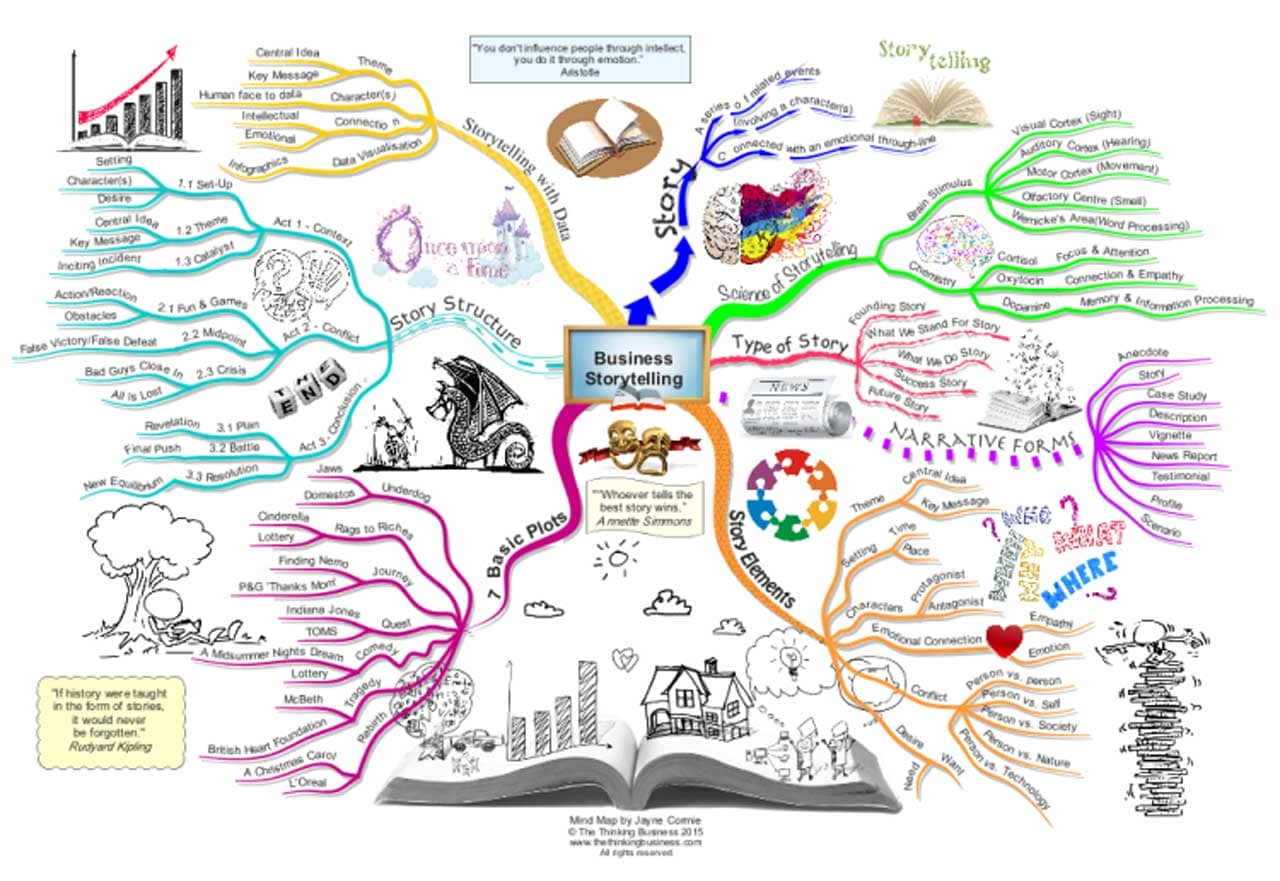
These fascinating examples are colorful, though in some cases, also quite visually overwhelming.
That’s why I’ve pared down my own style, and am glad I got Tony Buzan’s seal of approval after doing so:
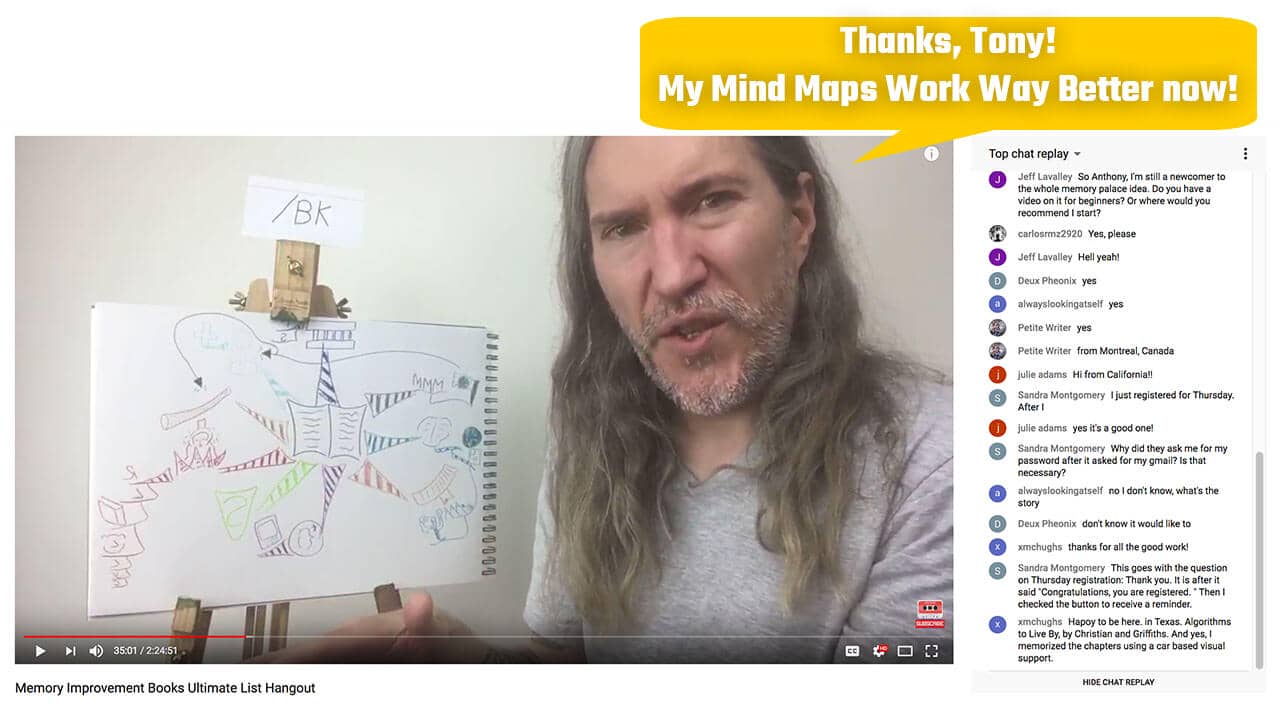
But you might be asking: aren’t these the same as spider maps, concept maps, and other such visualizations?
No. There are some key differences. For example, this mind map Tony helped me create for business outcomes has a central image and flows based almost purely on images.
Part of the effectiveness comes from what is called mental imagery and how it is personal to me and my goals. And there are further reasons why this particular approach works so well, which we’ll cover in the next section.
Why are Mind Maps Effective?
Nobel prize winner Dr. Roger Sperry’s research helped establish that visual forms of note making are more effective than written methods.
He showed that the brain is divided into two hemispheres that perform cortical skills like logic, imagination, color recognition, and others. These functions work in sync when you mindmap your thoughts, creating a lasting impression in your brain.
Mind maps are effective because:
- They nudge you to ditch the usual, bullet-point style of thinking, which pushes you to use your creativity.
- They are presented in a brain-friendly format — and people can grasp the linkages quickly.
- They let you see the bigger picture.
- They keep you focused on key issues.
- They give you time for “diffuse thinking” as you pause to change colors and reflect on keywords and images.
- And, they help you retain and recall more information through patterns and associations.
Next, let’s look at why mind mapping can be beneficial.
Benefits of Using a Mind Map
Years of research have gone into testing the effectiveness of mind mapping.
In a 2005 study by G. Cunningham, 80% of the students agreed that mind mapping helped them understand science concepts better.
Paul Farrand proved the efficacy of mind mapping as a study technique and encouraged its use in medical curricula.
Mind maps are known to help you to improve your productivity at work, academic success, and even to manage your life.
Here’s how you could apply it in your day-to-day life:
- Note Taking: You can map out notes from a podcast, a project discussion, or a seminar.
- Brainstorming: Helps in real-time collaboration with your team members to make informed business decisions.
- Studying: You can summarize books.
- Presenting information to an audience: Use it to get your team’s buy-in for anything through clear narratives.
- Problem-solving: Sometimes, it helps if you map out your current situation and your desired situation separately. This will help you come up with solutions easily.
- Increasing creativity: The words, images, and colors you use let you see the information from a very different perspective.
- Planning: Plan your holiday or your next sales strategy using mind maps.
- Language learning: Use a simple, 12-point mind map to combine 12 vocabulary words with the Major System. Here’s how:
Although mind mapping is not a magic bullet when it comes to learning a new language, it has been tremendously helpful in my journey towards developing fluency in several languages.
Who, When, and How to Make a Mind Map
Now that you have a fair idea of mind maps, let’s understand who should use it, as well as when and how.
Who Should Use Mind Maps?
Mind maps are particularly helpful for those who:
- Remember a visual image or a diagram better than written pieces.
- (Or need practice becoming more visual.
- Deal with lots of information or a project that needs more clarity.
- Need to brainstorm for ideas from others to build a bigger project or solution.
Mind mapping has also proven useful for dyslexic students and those with ADHD.
When Should You Use Mind Maps?
Create mind maps when you need to achieve some goal — to understand your course material or project better, or to assess the ideas from brainstorming sessions.
Remember — mind mapping isn’t the end goal by itself.
And don’t spend too much time perfecting it. If it takes too long, it may hamper your creative thinking.
Rather, make many mind maps and explore the principles discussed on this page. Doing so is called deliberate practice and will help you get into flow thanks to how consistent exploration of the technique helps you develop procedural memory and reflective insight.
How to Make a Mind Map
Drawing a mind map is pretty straightforward.
For example, if you want to prepare a meeting agenda take a blank page and follow these basic steps:
- Draw a bubble in the middle of the page with the title of your meeting.
- Branch out with new bubbles from the central theme, with each branch representing the topics you want to address.
- Draw lines to connect each of them to the middle bubble.
- Add new ideas starting from the general to the specific.
- Repeat this for each subtopic branching out from the topics.
What are the Rules for Mind Mapping?
Mind maps are meant to be hierarchical and show relationships among pieces of the whole.
What are the guidelines you can use?
Tips for Drawing a Mind Map
Here are some mind mapping rules to make your mind map project expressive and compelling.
- Use colors, illustrations, and pictures: Some of the most effective mind maps have more doodles and symbols than words.
- Keep the topics and sub-topics brief: Stick to a single word each, or just a picture instead of long phrases or sentences.
- Keyword for branches: Name your branches or lines using a keyword each.
- Use different text sizes and alignment: Provide as many visual cues as you can to emphasize important points.
- Use symbols: Draw symbols like arrows and shapes to classify your thoughts.
- Space it out: Leave enough negative space between your idea bubbles.
- Highlight important stuff: Highlight important branches or bubbles with borders or colors.
- Create linear lists: You can create linear hierarchies using bullet points and numbered lists.
- Mix up word sizes and fonts: Add in hierarchies of words using different font sizes to highlight their importance.
- Use varying cases: Use lower and upper cases to highlight the importance of ideas.
Every little effort you put into your mind map project will engage your brain. And, all these visual aids will make your mind map more memorable and easier to recall.
Now, do you draw mind maps on paper, or is there a diagramming tool to do it?
Additional Tools To Explore
You can draw mind maps by hand, just like note-taking during a lecture.
Or you can use websites or mobile phone apps to do it.
Traditional Mind Maps
Nothing is as comforting as putting pen to paper when an idea strikes you. This is, in fact, the simplest way to map your ideas.
It is your personal project — your thoughts, handwriting, and your doodles. You can create it yourself or in groups on a whiteboard during a brainstorming session.
The pen-and-paper method works perfectly most of the time, but it does have limitations:
- You may not have enough space on the paper to expand your thoughts.
- You can’t make too many corrections.
- And, it may not always be presentable enough to share in a formal meeting.
The other option is to use mind mapping software — websites and apps.
Mind Mapping Software
Mind mapping apps and websites help you organize your ideas and store large amounts of data in a single location.
What makes for great mind mapping software?
The best mind mapping tools…
- Allow you to create a wide network of ideas, facts, and connections.
- Let you make quick changes through automatic spatial organization and hierarchical structuring (particularly useful while brainstorming).
- Let you play with fonts and colors, and even drag and drop files into the mind mapping program.
Which are the Best Mind Mapping Software Tools?
Here are three of the best online mind mapping tools available today:
1. MindManager by MindJet: This tool is for business users — a professional mind map maker with MS Office integration. You could even pick a mind map template in the tool to get started.
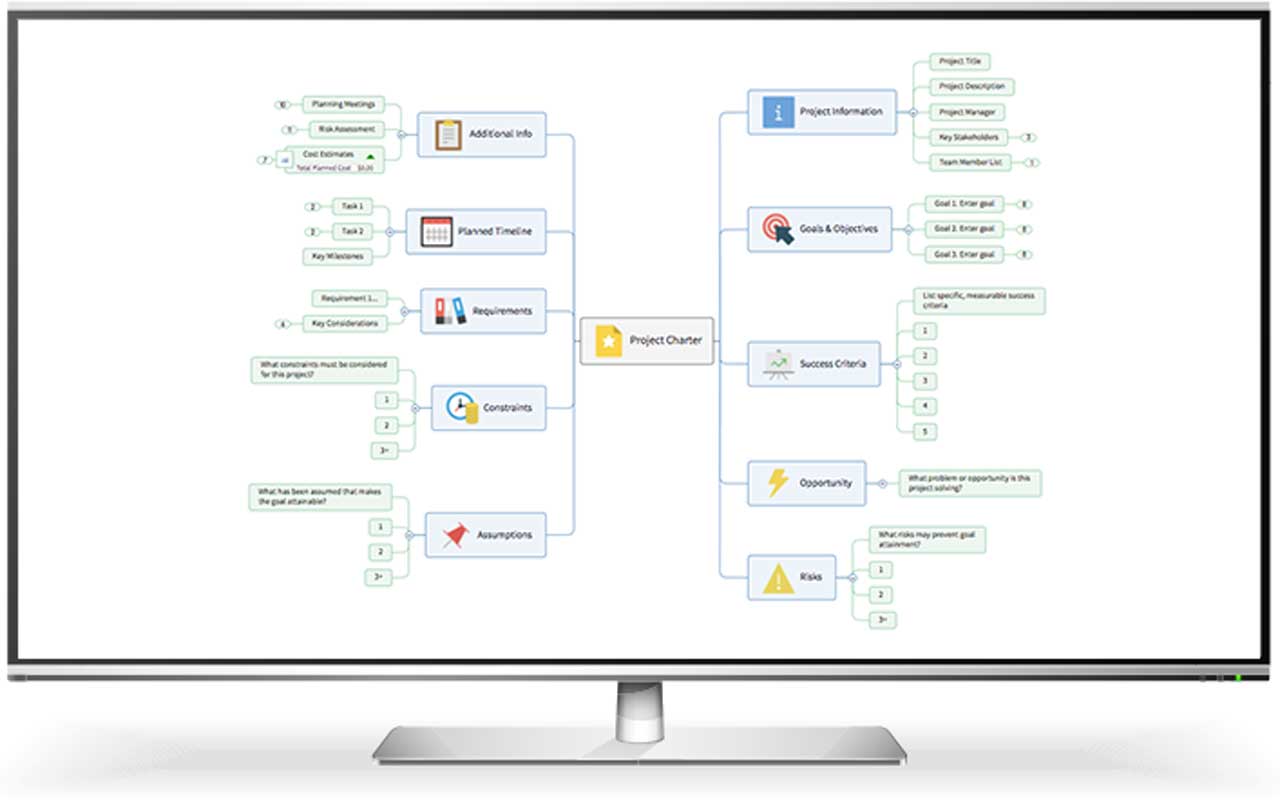
2. XMind: This mind mapping tool has a simple interface and is mainly for enterprise-level users. It lets you convert your mind maps to a Gantt chart that shows the start and end dates and progress of each task.
You can even use a countdown timer to time your sessions on this mind mapping software (this will keep you focused and will stop you from spending too much time mind mapping and brainstorming).
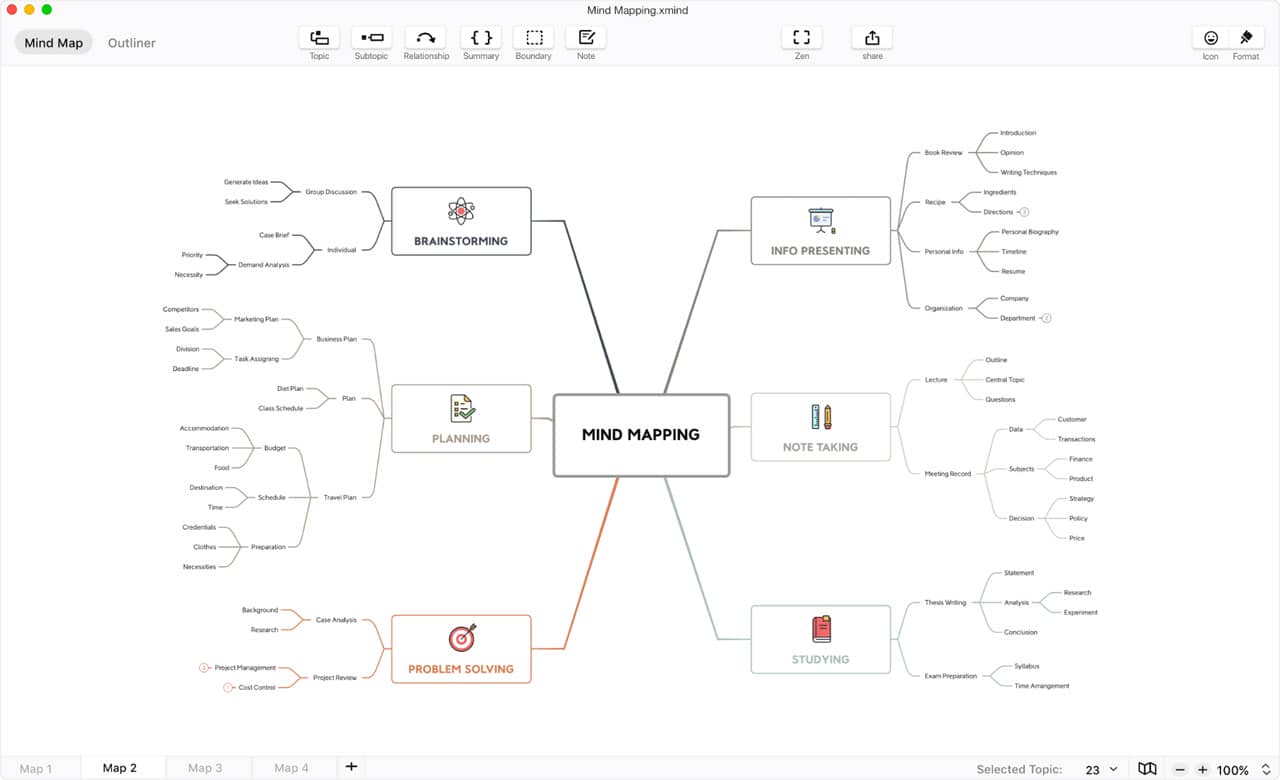
3. Scapple: This mind mapping tool was built for writers by a writers group called “Literature and Latte.” It is easy to use and comes with great features (minus embedding audio and video).
With this mind mapping application, you’re not limited to starting with a central theme. You can begin with a small idea, then work backward to reach the main idea.
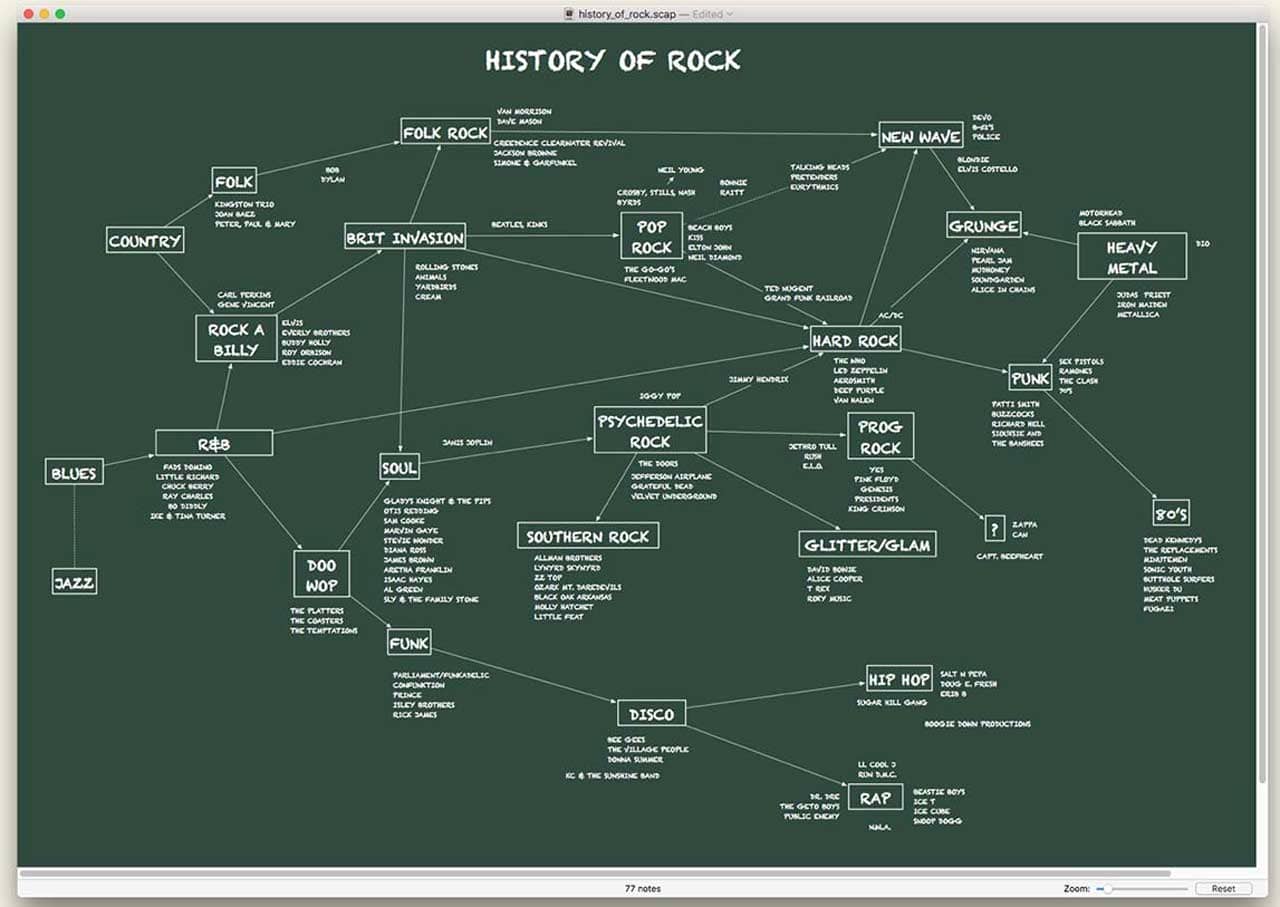
You could also experiment with an open-source free mind mapping tool like FreeMind or Coggle.
The point is this: there are a lot of options. For an example of one teacher who uses software and teaches with a specific focus on personal develop is Joseph Rodrigues. Here’s one of his best:
Mind Map + Memory Palace = Magnetic Memory
A mind map is an excellent non-linear visual representation of your ideas that mimics the way your brain thinks. You can also use mind mapping for business to help you determine how the market thinks too.
Once you master it (whether you use a notebook or a mind mapping software), you’ll never go back to linear note-taking ever again. But, mind mapping alone may not boost your brainpower as much as when combined with the Magnetic Memory Method. If you need more mind map examples, I have plenty for you.
And there are alternatives for exploring various aspects of your mind, such as using adult coloring books and brain games.
At the end of the day, I suggest combining mind maps with all kinds of activities, including the Memory Palace technique.
So when you’re reading to use this combination to fire up your memory, creativity, and learning, sign up for my free memory improvement kit:
Related Posts
- 9 Powerful Mind Mapping Examples To Model For 9 Top Outcomes
Mind mapping improves memory and creativity. These mind mapping examples will help you use them…
- 15 Secrets To Expanding Your Mind And Accessing More of Your Brain
You want to expand your mind but don't know how. These 15 secrets show you…
- How to Increase IQ: 7 Actionable Activities
It's possible to increase your IQ. The best part is that it's easy to do…


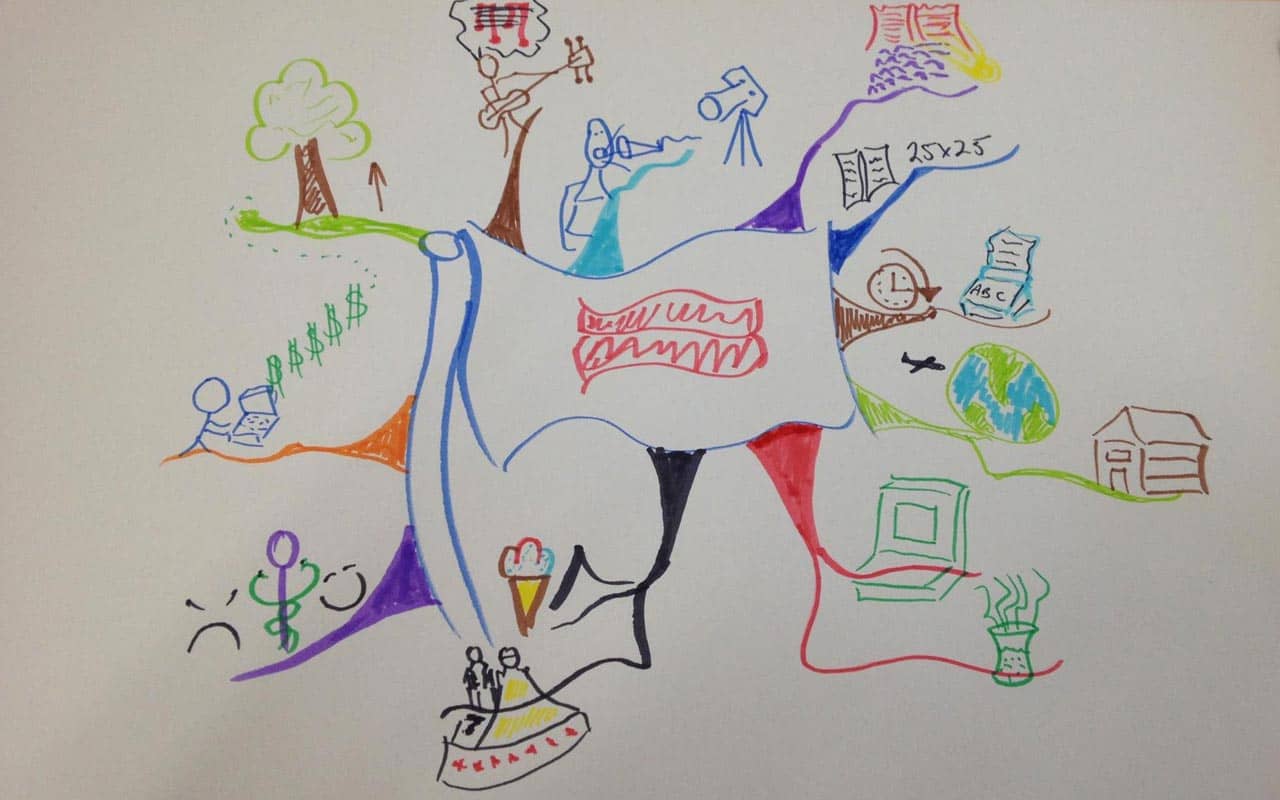







2 Responses
Yesssss! Mind mapping has been KEY to getting my latest writing project off the ground. Thank so much for this guide! ❤️
That’s great, Deb.
Just about every one of my book projects have also involved mind mapping. I’ve got another one that just left the first draft stage, in fact. I sometimes use additional mind maps to work out the second drafts as well.